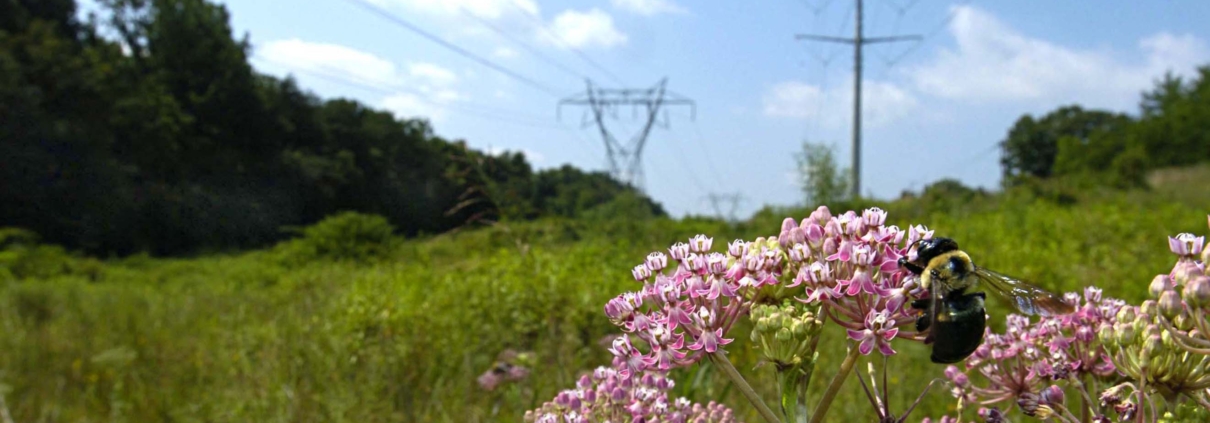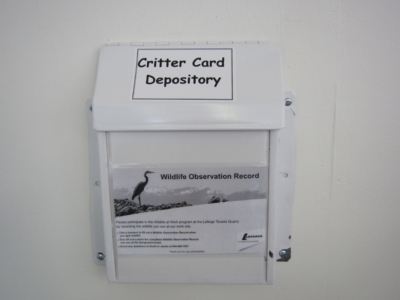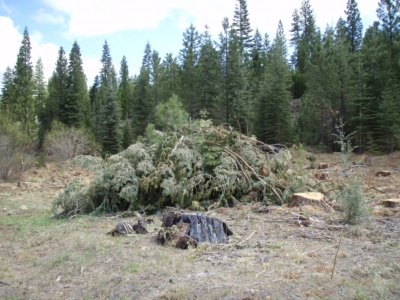Calling Nature Back: Celebrating Random Acts of Conservation
A presentation entitled “Avoiding Random Acts of Conservation” recently came across my desk and my first thought was, Why would anyone want to do that?
The point of the presentation was that by avoiding random acts of conservation, we ensure that resources provided for conservation are used strategically and outcomes are evaluated efficiently, but we also create a barrier to entry, exacerbating the growing distance between people and nature. The presentation had an important message for conservation professionals, but an unfortunate title for everyone else engaged in efforts to improve our natural world.
Imagine if random acts of kindness were strategic, objective-based and measurable. Little old ladies would be abandoned, forced to cross the road by themselves. The injured and old compelled to stand on crowded trains. Doors no longer held open for the burdened. Tips for services no longer rendered. A generation would emerge for whom kindness becomes something that is done by organizations with core competencies in the practice of kindness, and the resources to set kindness objectives and measure the outcomes.
Levity aside, my point is a serious one. The distance between humanity and the natural world is large and growing. Studies, books, presentations and TED talks illustrate this fact. According to the United Nations, more than half the world’s population is now living in cities, migrating further and further from natural places. A recent report on outdoor recreation in the U.S. shows that participation in outdoor activities has fallen and that the biggest motivation today to get outside is not exploration of nature, but getting exercise to overcome a sedentary lifestyle. Across the planet, efforts are underway to encourage children to spend unstructured time in nature following studies that find technology, perceptions of danger and lack of easy access to the outdoors all culpable in keeping a generation of children indoors.
The language we use accelerates the growth of this distance. A child will not rejoice installing a unit of carbon sequestration, but will always remember the first tree they plant. A school group will never fondly recall the productive use of natural capital on a localized basis, but will enjoy the salsa and pesto made from their school gardens. A team of volunteers will never proudly wear t-shirts that proclaim them ecosystem service engineers, but will gather as wildlife teams, river stewards or nature clubs to perform the same acts.
We need to call nature back. Let’s bridge the growing distance, arresting some of the trends or at least mitigating their impacts, not just on nature but also on future generations of nature lovers. Let’s celebrate random acts of conservation and ensure that children, volunteers and others see a role for themselves in making a difference in small but significant ways.
The Wildlife Habitat Council, along with our members and partners, is doing its part. At our 26th Annual Symposium in November, over 400 individuals engaged in random and non-random acts of conservation gathered to celebrate their individual and cumulative impacts on nature through projects as simple as pollinator gardens and trails, to more complex efforts like wetlands restoration, site cleanup and restoration and reclamation projects.
During our awards banquet, extraordinary efforts are honored not only for their contribution to conservation, but also their efforts to engage employees and community:
- Vulcan Materials Company, at its Liberty Quarry in South Carolina, manages 400 acres for upland and wetland ecology and, through its partnership with Liberty High School, has installed nesting structures for waterfowl, migratory songbirds and bats involving students in designing, implementing and maintaining natural areas.
- In Indonesia, Freeport-McMoRan’s extensive restoration of its Grasberg facility will reclaim hectares of mangrove swamps, create a herbarium and a butterfly sanctuary, and engage 70 local schools in using the lands for learning, providing internships and on-the-ground practice for budding ecologists and restoration professionals.
- General Motors in Arlington, Texas, has built a trail and outdoor classroom for students to learn from the on-site wetland and prairie that is part of this assembly plant, and at their facility in Lansing, Michigan, efforts to control invasive species and restore meadows is being carried out in partnership with a local congregation.
These examples represent four of the more than 100 newly certified and re-certified projects we recognized at our Symposium this year which, when added to existing efforts, brings the efforts of our members and their employees to over 800 acts of conservation worldwide. Each one serves to call nature back by giving it a place to thrive in a corporate setting and connecting people through access, education and recreation. These acts of conservation are truly worth celebrating.



Great post. How do I subscribe to your blog posts?
Hi Patti, thanks for your interest! You can find all the different ways to keep up with our blog posts in the “Connect with Us” box in the top right of the page. We share our Wildlife Blog and President’s Blog posts to Facebook, Twitter, and our LinkedIn group, as well as in our email Newsletter. You can also follow our blog posts via RSS (click “Wildlife Habitat Council RSS”) using an RSS feed reader such as Feedly.